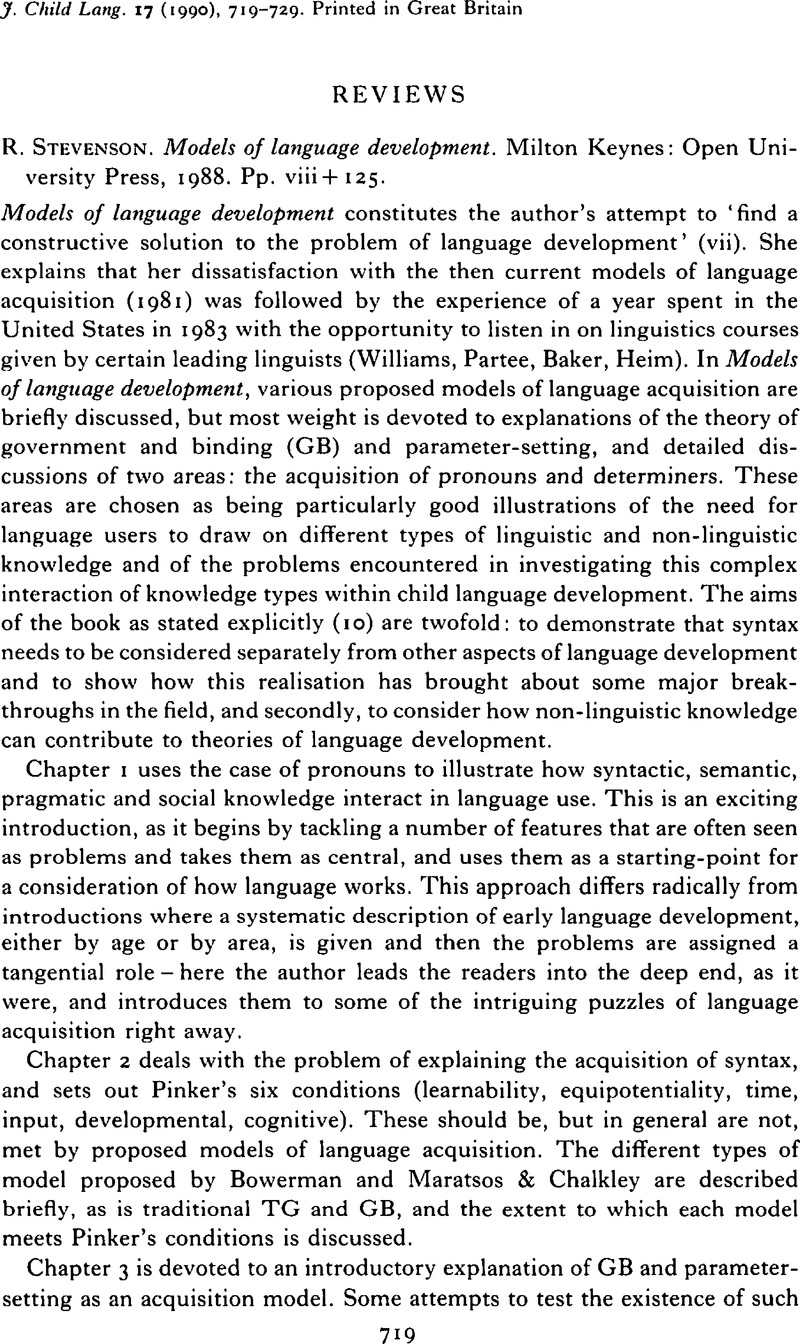No CrossRef data available.
Article contents
R. Stevenson. Models of language development. Milton Keynes: Open University Press, 1988 Pp. viii + 125.
Review products
R. Stevenson. Models of language development. Milton Keynes: Open University Press, 1988 Pp. viii + 125.
Published online by Cambridge University Press: 17 February 2009
Abstract
An abstract is not available for this content so a preview has been provided. Please use the Get access link above for information on how to access this content.

- Type
- Reviews
- Information
- Copyright
- Copyright © Cambridge University Press 1990
References
REFERENCES
Arbib, M. A. & Hill, J. C. (1988). Language acquisition: schemas replace universal grammar. In Hawkins, J. A. (ed.), Explaining language universals. Oxford: BlackwellGoogle Scholar
Bates, E., Bretherton, I. & Snyder, L. (1988). From first words to grammar. Cambridge: C.U.P.Google Scholar
Bowerman, M. (1982). Reorganizational processes in lexical and syntactic development. In Wanner, E. & Gleitman, L. R. (eds), Language acquisition: the state of the art. New York: C.U.P.Google Scholar
Bowerman, M. (1988). The ‘no negative evidence’ problem: how do children avoid constructing an overly general grammar? In Hawkins, J. A. (ed.), Explaining language universals. Oxford: Blackwell.Google Scholar
Demetras, M. J., Post, K. N. & Snow, C. E. (1986). Feedback to first language learners: the role of repetitions and clarification questions. Journal of Child Language 13. 275–92.Google Scholar
Gallaway, C. (1987). The emergence of a and the. Unpublished Ph.D. thesis, University of Lancaster.Google Scholar
Hawkins, J. A. (1988). Explaining language universals. In Hawkins, J. A. (ed.), Explaining language universals. Oxford: Blackwell.Google Scholar
Maratsos, M. & Chalkley, M. A. (1980). The internal language of children's syntax: the ontogenesis and representation of syntactic categories. In Nelson, K. (ed.), Children's language. Vol. 2. New York: Gardner Press.Google Scholar


